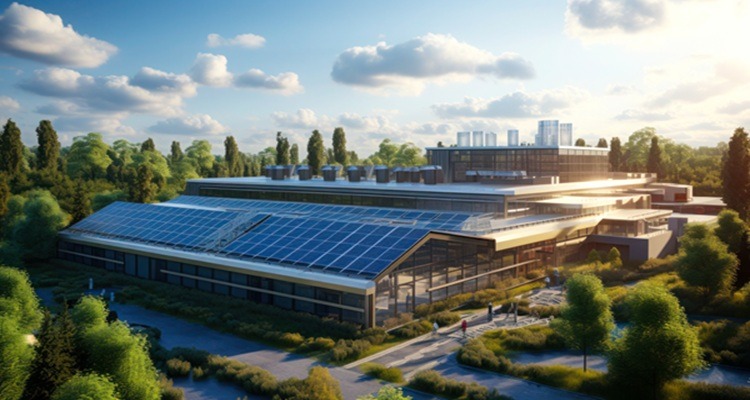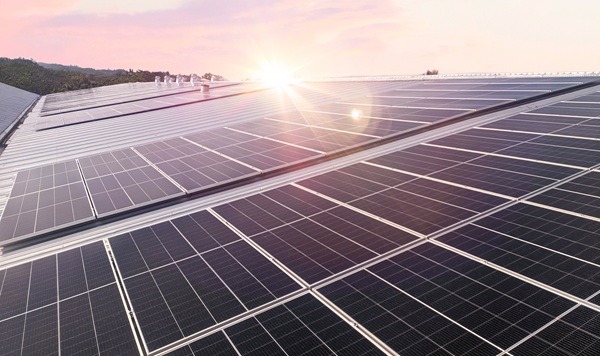Commercial buildings consume significant energy to keep operations running—whether through climate control, production systems, or lighting infrastructure. As utility rates climb and sustainability targets tighten, businesses are under growing pressure to manage energy use more efficiently without sacrificing performance.
Solar energy presents a long-term solution that goes beyond reducing utility bills. It supports cost control, improves energy reliability, and signals a commitment to responsible business practices.
Read on to learn how to maximize energy efficiency and savings with commercial solar solutions.
Conduct a Detailed Energy Audit Before Installation
Understanding how your facility uses energy is key to getting real value from a commercial solar setup. Without this step, it’s difficult to design a system that aligns with your actual needs.
To get a clear picture of where solar can have the most impact, the following areas should be reviewed during a detailed energy audit:
- Track usage trends by time of day: Logging energy use across different hours shows when demand is highest. This helps target specific periods where solar can reduce peak costs.
- Identify underperforming equipment: Audits often reveal machines or systems drawing more power than necessary. Replacing or repairing these reduces consumption before solar is added.
- Evaluate HVAC and lighting systems: Older HVAC units and inefficient lighting are common energy drains. Improving these areas first leads to better long-term savings when solar is in place.
- Compare seasonal usage patterns: Reviewing how energy use changes across months supports better system planning. You’ll avoid installing capacity that goes unused or comes up short during high-demand periods.
- Check for simultaneous load issues: Some facilities have overlapping high-energy activities that spike demand. Adjusting schedules or operations based on audit findings can lower strain and improve solar performance.
Audit results lay the foundation for a system designed to work with how your business operates—not against it. Skipping this step risks spending on equipment that doesn’t fit your actual energy profile.
Optimize Solar Design and Placement
Solar system design should reflect the specific layout, infrastructure, and goals of your business. Poor placement or configuration can limit energy production, even with high-quality equipment.
To improve performance from the start, the following are key design and placement considerations:
- Evaluate roof or ground options: Site conditions should guide whether your system goes on the roof or on the ground. A provider experienced in solar panels for commercial use can tailor installation based on your energy needs, site layout, and structural constraints. They can also assess zoning regulations, sunlight exposure, and potential obstructions to ensure optimal performance and compliance from the start.
- Use south-facing orientation: Position panels to face south if you’re in the northern hemisphere. This setup maximizes direct sunlight exposure throughout the year, improving energy production without needing extra equipment.
- Factor in shading and tilt: Even partial shading can reduce system output. Review nearby trees, buildings, and rooftop features that may cast shadows. Adjust tilt angles to match your location’s optimal sun angle for better efficiency.
- Incorporate solar carports: If rooftop or ground space is limited, parking areas can be used for solar carports. These structures generate power while also offering covered parking, expanding usable surface area without additional land.
Design choices directly affect how much energy your system can generate. Making informed decisions early increases efficiency and long-term value.

Integrate Battery Storage for Greater Control
Adding battery storage strengthens your solar investment by giving you more flexibility in how and when you use the energy you produce.
The following are ways energy storage improves system performance:
- Store excess energy: Batteries allow you to capture unused solar power during low-demand hours. You can then use it during peak times, helping reduce your grid reliance and overall electricity costs.
- Protect against outages: A battery system provides backup power when the grid goes down. This keeps critical operations running, limits downtime, and protects sensitive equipment.
- Shift usage away from high-cost periods: Instead of drawing power from the grid during expensive peak demand hours, batteries can discharge stored energy. This helps lower demand charges and improves cost control.
Battery storage gives you more control over your energy strategy and supports long-term savings with greater reliability.
Take Advantage of Available Incentives
Solar incentives can significantly reduce your upfront costs and improve long-term savings. These financial programs are designed to make commercial solar more accessible and profitable.
Below are the most effective options to lower your installation and ownership expenses:
- Claim the federal tax credit: This credit lets you deduct a portion of your solar system cost directly from your federal tax liability. It’s a percentage-based incentive that applies to both the equipment and installation expenses.
- Use depreciation benefits: Under MACRS, commercial solar projects can recover installation costs faster through accelerated depreciation. This lowers your taxable income and improves cash flow in the early years.
- Consider power purchase agreements: A PPA allows a third party to install and own the solar system on your property. You pay for the electricity it generates at a fixed rate, eliminating upfront costs while still benefiting from solar power.
- Apply for local and state incentives: Many states and municipalities offer rebates, tax exemptions, or renewable energy credits. These programs vary by location and can further cut project costs or add revenue streams.
Incentives like these reduce the financial burden of investing in energy infrastructure and help speed up returns. Lower capital requirements and faster payback timelines make solar a more practical and sustainable choice for businesses.
Final Thoughts
Maximizing energy efficiency and savings with commercial solar takes more than installing panels. It requires a strategic approach based on real usage data, smart design, reliable storage, and financial planning. Tailoring your solution to your site and operations allows you to reduce your carbon footprint, control long-term electricity costs, and support a sustainable future while meeting performance targets. With the right plan, commercial solar delivers clean, cost-effective power that supports your bottom line and long-term growth.


